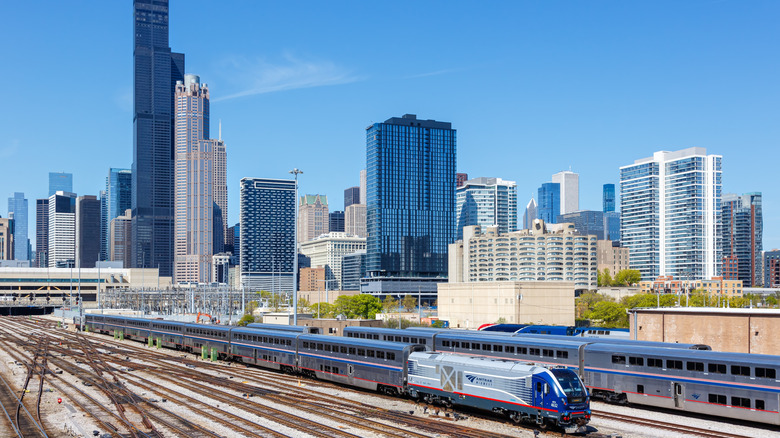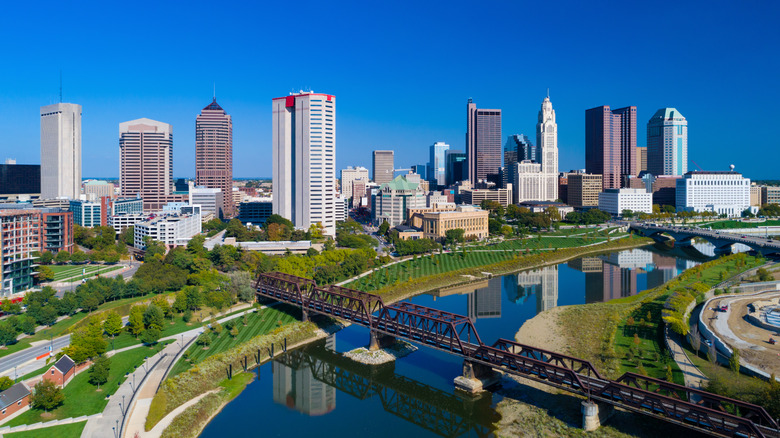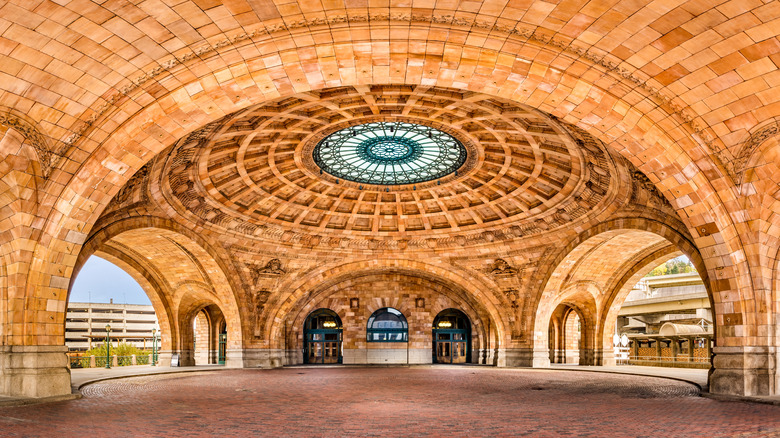Amtrak's Potential Upcoming Route Would Connect These Major Hubs In The US Midwest
If you look at a map of the Midwestern U.S., this Amtrak line seems like it should already exist: Columbus, Ohio isn't quite 200 miles west of Pittsburgh, and Ft. Wayne, Indiana is just about 160 miles beyond that. From there, it's only another 160 miles to Chicago, Illinois, one of the biggest railroad hubs in the country. These once-industrial cities used to be well connected with passenger rail, long before the highways moved in and most of the factory jobs moved out. You might assume that trains already run between these cities. Not so; you can take Amtrak between Pittsburgh and Chicago, but the current line travels north, skipping Columbus and Ft. Wayne altogether.
That may change, if the Mid-Ohio Regional Planning Commission (MORPC) has anything to say about it: In October 2025, this nonpartisan regional council, which represents 90 different governments, proposed a new Amtrak route tethering these four cities together. Under the working title "Midwest Connect," the new route has attracted considerable local attention, as well as hundreds of thousands of dollars of investment from communities across Ohio — the state where most of the ride would take place.
If you've never spent time in the Midwest, you may wonder why this is a big deal. What exciting things can a traveler do in Ft. Wayne? Much of the country tends to dismiss this region as flat, sleepy, and past its prime. These impressions are wildly outdated; Pittsburgh, Columbus, and Ft. Wayne have all garnered reputations as "comeback cities." You can already experience the best of the Midwest on this adventure-packed road trip, and passenger rail would make a parallel journey even smoother.
How trains could accelerate the Rust Belt Renaissance
Since the '80s, this swathe of the Midwest has been nicknamed the "Rust Belt," due to declining industry and economic misfortunes. Over the decades, these cities suffered major blows, such as shrinking populations, blighted neighborhoods, and abandoned infrastructure, including train service. Coastal residents tend to think of the Midwest as "flyover country," and to be fair, these cities are much easier to bypass than to visit. A one-way flight from JFK Airport in New York to Fort Wayne will probably cost at least $300, and you'll have to transfer at a larger city. Flying into Indianapolis cuts down on airport time, but you still have to drive more than two hours to reach this part of Indiana. The route can get even more convoluted between Rust Belt cities.
Yet the Rust Belt has come a long way recently. For starters, these cities are still pretty well-inhabited: Fort Wayne has a population of 270,000, while Pittsburgh has over 300,000, and Columbus is pushing one million. Lest we forget from civics class, Columbus is Ohio's capital, and its revived cultural scene and affordable real estate market have made it the second-fastest-growing U.S. city in 2024. Ft. Wayne is home to an impressive zoo, History Center, and Museum of Art. Pittsburgh has become the prototype for Rust Belt reinvention, thanks to its many universities, neighborhood revitalizations, and energetic arts scene.
Then there's Chicago, the third-largest city in the country. In short, there's a lot to see in the former Rust Belt, and more and more people are rediscovering this quadrant of America's heartland. One of the U.S.' best train rides takes you from Chicago to the California coast, and Midwest Connect will only improve accessibility.
When will Midwest Connect get started?
For the time being, Midwest Connect is only a proposal, albeit a realistic proposal with lots of community enthusiasm. These projects can take time to develop and approve, and Midwest Connect promises to cover hundreds of miles of railway that hasn't transported passengers for years. Columbus' Union Station, which was once a neoclassical beauty from 1851, was demolished in 1977 for lack of use, and Amtrak has bypassed the city for decades.
Ft. Wayne's Baker Street Station closed in 1990, yet in 2024, the Northern Indiana Passenger Rail Association (NIPRA) earned a $500,000 grant to help restore the old structure, which was first erected in 1914. Pittsburgh's gorgeous Union Station has remained active since its completion in 1903, and connects passengers in the Steel City to Chicago, Philadelphia, and Washington, D.C.
Given the importance of this corridor, the odds seem good that Amtrak will embrace Midwest Connect and raise the necessary funds. If the new line comes to fruition, it will be at a dramatic moment in U.S. rail history: Amtrak is considering a three-day transcontinental train route connecting these major U.S. cities, along with long-lost western routes that Amtrak might finally restore. Meanwhile, an independent company is building a high-speed bullet train with lightning fast trips between Los Angeles and Las Vegas. Many of these plans are up in the air, and exact timetables are impossible to predict. But domestic travelers may soon have reason to rediscover these forgotten communities — and see what "flyover country" is all about.


